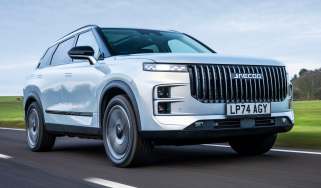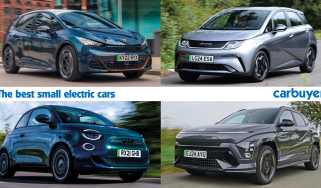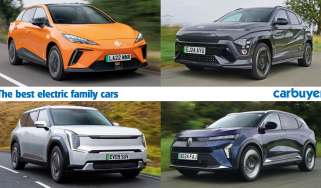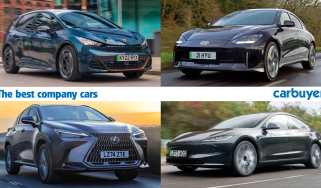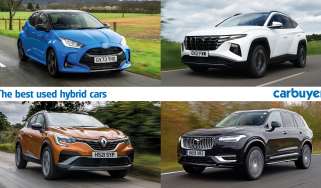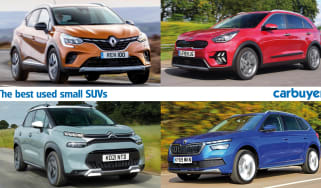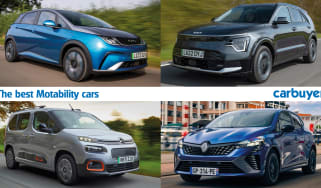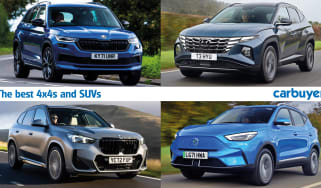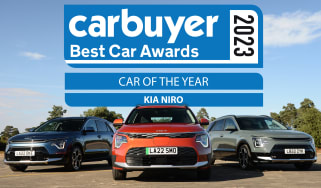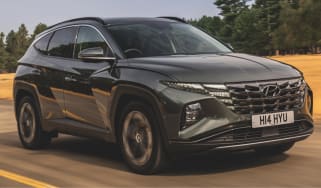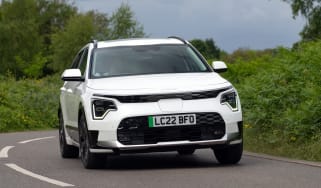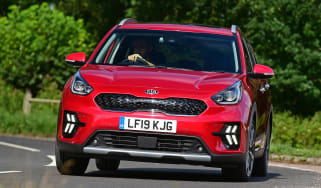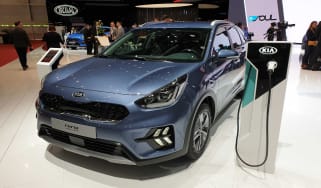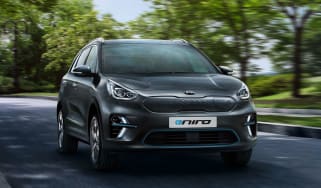Kia Niro SUV review
“The new Kia Niro has more space, tech and performance than ever, but it’s more expensive than before too”
Pros
- Low running costs
- Spacious interior
- Impressive tech
Cons
- Expensive top versions
- Unexciting to drive
- Small boot in Niro PHEV
The Kia Niro is one of a small number of cars that’s available in hybrid (HEV), plug-in hybrid (PHEV) or all-electric (EV) forms. There are no plain petrol or diesel versions in the range at all, so the Niro is great for people wanting to switch to an electrified car in some form, whether they can make use of a charger or not.
The Niro Hybrid has a small battery and electric motor, so it’s the cheapest model to buy or finance. It’s also best-suited to people who can’t charge up at home, for example if you have to park on the street overnight or don’t have dedicated parking outside your house. Its rivals include the Toyota Yaris Cross and Renault Captur E-Tech Hybrid, and like those cars, the Kia’s battery is charged using the petrol engine, as well as via regeneration tapped from the wheels when you slow down.
 Top 10 best hybrid SUVs in 2025
Top 10 best hybrid SUVs in 2025
The Niro PHEV is a plug-in hybrid, so it has a bigger battery and its electric motor is twice as powerful. This means it’s able to drive for much further on electric power alone – up to around 40 miles. There’s still a 1.6-litre petrol engine to keep you going once the battery’s empty, although the clever tech always keeps some energy in reserve to save fuel where possible. You can charge up using a plug and use the PHEV for short trips without the engine coming on.
More reviews
In-depth reviews
The Niro EV is the fully-electric model and has no petrol engine at all. It’s quite expensive to buy – batteries are still a big part of the costs for electrified cars – but you’ll make savings on petrol costs, vehicle tax and company car rates. It has a range of up to 285 miles and supports rapid charging, which should be enough for most people most of the time. If you do a lot of longer trips, one of the hybrid versions of the Niro might be better.
The latest Niro looks more modern and stylish than the rather plain-looking version that preceded it. It’s quite easy to tell the Niro EV apart from the Hybrid and Plug-in Hybrid versions as it has a blank grille section at the front, with a noticeable flap for the charging port right in the middle.
The interior is even more impressive and features a swooping design for both its dashboard and doors, plus the high quality materials are sustainably sourced. There’s even vegan leather for the seats and impressive twin 10.25-inch screens for the infotainment in the top-spec ‘4’ trim level. All get smartphone connectivity, though, which is useful.
 The best mid-size SUVs – our 2025 top picks
The best mid-size SUVs – our 2025 top picks
A small but noticeable increase in overall size has also made the Niro more practical. Its tall roofline and boxy shape always helped in this regard, and there’s now plenty of rear legroom for adults. The boot measures up to 451 litres (475 litres in the Niro EV), so buyers migrating from a family hatchback like the Volkswagen Golf should find the Niro offers a small step up in practicality.
More manufacturers are moving away from a ‘jack of all trades’ approach for new models, but the latest Niro shows it can still be a winning strategy. All three versions have their merits, with the Niro Hybrid our pick for private buyers making short trips, and the PHEV or EV making lots of sense for higher-mileage and company-car drivers. Whichever you choose, the Niro is attractively styled and easy to live with.
Which Is Best?
Cheapest
- Name1.6 GDi 127 Hybrid 2 Nav 5dr DCT
- Gearbox typeAuto
- RRP£30,085
Most Economical
- Name1.6 GDi 168 PHEV 2 5dr DCT
- Gearbox typeAuto
- RRP£35,325
Fastest
- Name1.6 GDi 168 PHEV 2 5dr DCT
- Gearbox typeAuto
- RRP£35,325





